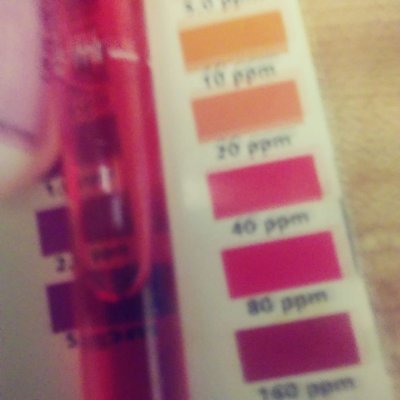I can not tell what Nitrate is from the test. It looks to be 80 ppm. I do have a Nitrate pad in the tank for a few weeks. I am going to put a photo in this post and see if any of you can guess at the number for nitrate. i also did a 50 percent water change. Since 2 days ago. 

I also use spring water for my Bettas tanks.
I also have the sponge first, then the Nitrate sponge in the back of the filter. I also shake the bottles really well, before using.


I also use spring water for my Bettas tanks.
I also have the sponge first, then the Nitrate sponge in the back of the filter. I also shake the bottles really well, before using.


